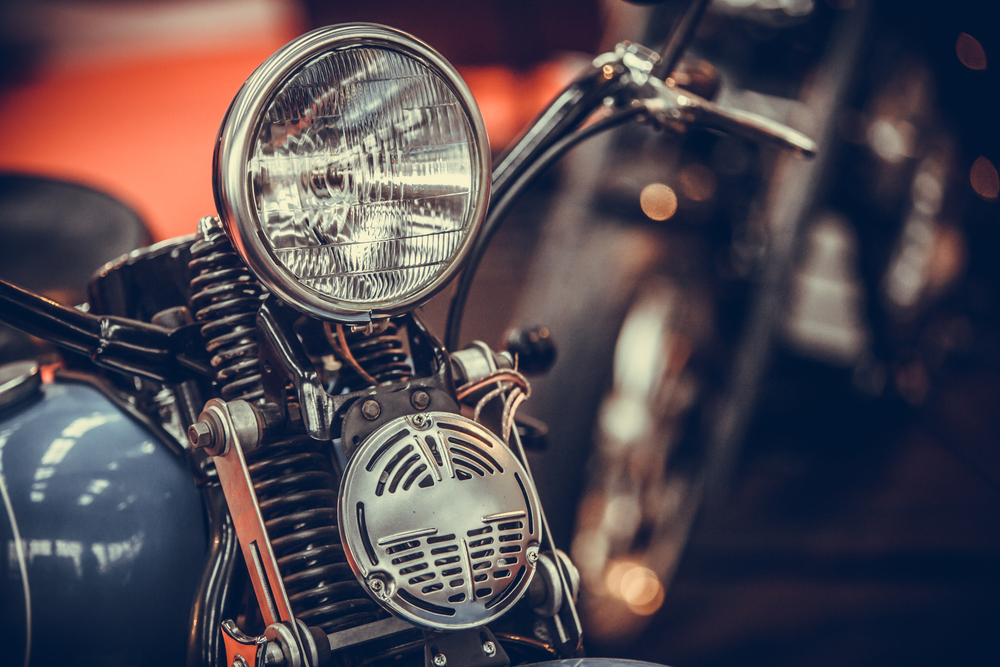
Top 5 Tips to Maintain and Protect Your Classic Bike
Wednesday, October 31, 2018
The open road. Nothing quite compares to exploring the country on a classic motorbike. Nostalgia runs deep whether you are cruising on a late 1940’s Indian Chief or speeding along on BMW Slash 5. Regardless of your ride, properly maintaining your bike will provide enjoyment for years to come. Here are our top 5 tips to maintain and secure your classic bike.
Keep it Clean
It is said cleanliness is next to godliness. While this phrase has centuries-old roots, keeping your bike clean is one of the most critical steps you need to take in maintaining your classic ride. Thorough cleaning helps prolong the life of your bike, even though the process can be very tedious to do all of the time.
Fortunately, you do not have to do anything fancy when cleaning. All you need is a bucket of soapy water, an old toothbrush, and a sponge. The objective is to keep dirt and grime away. As important is wiping away water spots that can result in damaged paint. If you have a lot of oil build up, consider purchasing a quality de-greaser that can break down the oil without ruing paint, chrome, or clear coats.
Tip Top Tires
Our second tip is to make sure the tires on your bike are properly inflated. If the tires are not properly inflated, excessive wear can occur, and the propensity of punctures can increase. Excessive wear is not only costly in the long run, requiring more often tire replacements, but also dangerous by reducing the grip with the road.
Tire pressures need to be taken cold. Checking your tire pressure after a long ride will provide a false, high reading. To know if your tires are properly inflated, look on the side of your tires for a number followed by the letters of PSI (pounds per square inch). This is the number to follow when checking and inflating each tire.
Brake Check
Saggy brakes are quite common on older rides. To have sagginess in your brakes means that they feel sluggish and slow to respond when you squeeze your brake lever. If the lever requires a high-level strength before you begin to feel the brakes being applied, it is time for an adjustment or perhaps new brakes altogether.
If your brakes are new and have not worn down, the first step for many classic bikes is to adjust the barrel closest to the brake lever. If the barrel adjustment does not tighten the brake pressure enough, a set of Allen keys and an afternoon will be needed. There are plenty of videos online explaining how to adjust your brakes properly. But, in a nutshell, you will be working to tighten the brake lines throughout the entire braking system.
Steering Away from Salt
Salt is the enemy of metal. Except for a few western states, classic bikes can be exposed to the corrosive effects of salt almost anywhere. Salt can be found during the winter months when road crews use salt to make the roads a little less slippery. Bike owners living on either coast or the Gulf of Mexico will need to fight salt made airborne by sea spray.
There are two important guidelines to follow regarding salt. First, make sure you remove salt using only use cool water. If you use warm or hot water, it may actually accelerate the effects of salt corrosion. The second note is you need to make sure the bike is dry. After removing all salt, use sprays or waxes to help protect exposed metal from salt and make it easier to remove any salt accumulation that does occur.
Attention to Your Wheels
Our last tip is to make efforts to maintain your classic bike’s wheels. Wheels will get dirty. With dirt comes corrosion, scuff marks, and potentially irreparable damage. Unfortunately, while motors can be rebuilt on even the oldest of bikes, finding period specific wheels can be nearly impossible.
Therefore, it is going to be a good idea to clean those wheels after each ride. All that you have to do is to take a wet sponge and a mild detergent to clean them. It is very important you do not use any stiff brushes, steel wool, or cleaners that have abrasive or chemical compounds inside of them. Follow up with a fresh water rinse and dry with a micro-fiber towel.
Riding a Classic
Caring for a classic motorbike is much different than maintaining a new ride. In today’s marketplace, replacement parts are readily available for the newest motorcycle. For the classic bike owner, however, proper maintenance must be as much about preserving hard to replace parts as it is keeping the motor oil clean.
To learn about insurance for your classic bike, contact our team at ProtectiveAgency.com or call (877) 739-9367. Our licensed insurance agents will be happy to answer any questions you have.
